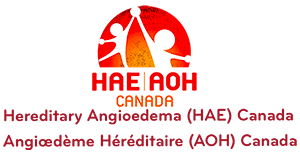Most cases of angioedema turn out to not be HAE, because most swelling attacks are typically allergic reactions or swellings caused by something other than C1-inhibitor deficiency. Laboratory analysis of blood samples or genetic testing is required to establish the HAE diagnosis. There are three specific blood tests that confirm HAE:
- C1-inhibitor quantitative (antigenic)
- C1-inhibitor functional
- C4
The most common form of the disease – Type I – is characterized by low quantitative levels of C1-inhibitor and affects about 85 percent of patients. Type II HAE affects the other 15 percent of patients who have normal or elevated levels of C1-inhibitor, but the protein does not function properly.
Several investigators have noted a familial (and therefore inherited) angioedema in patients with normal levels of C1-inhibitor. Now found under the designation of “HAE with Normal C1 Inhibitor”, this form of angioedema is yet to be fully understood.
HAE with Normal C1-Inhibitor, four types and counting:
Bruce Zuraw: Journal of Allergy and Clinical Immunology 144,884-885, March 2018
How to get diagnosed in Canada
If you think you may have HAE, the first step is to visit your family physician who can refer you to an HAE specialist. If you and your family physician need help finding an HAE specialist in your area, you can refer to the Canadian HAE Network (CHAEN)‘s website where they have a list of the HAE treating physicians across Canada who are members of CHAEN.
At what age do HAE attacks start?
The age of HAE onset varies considerably, however, in one study, half of the patients reported onset of their symptoms by the age of seven, and over two-thirds became symptomatic by the age of thirteen. There also seems to be an increased frequency of attacks during puberty or adolescence.
